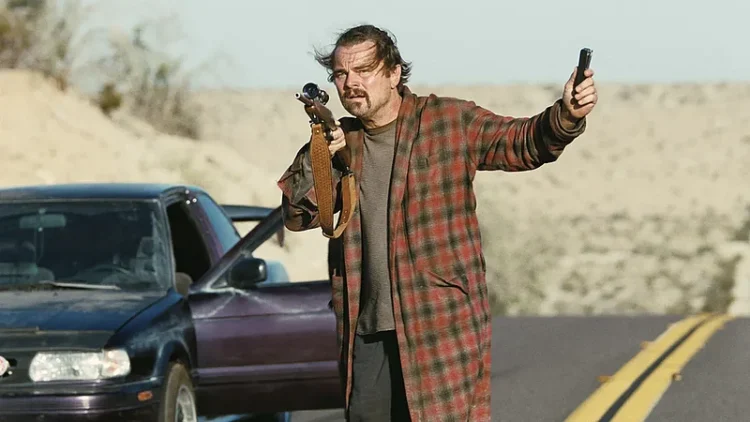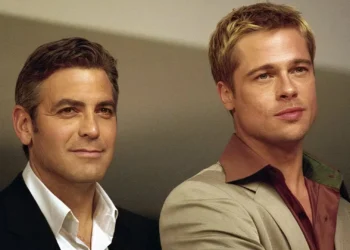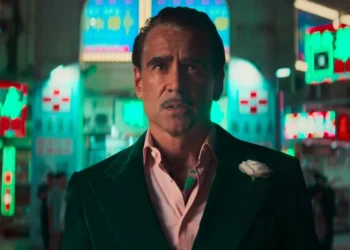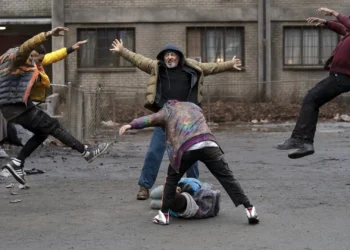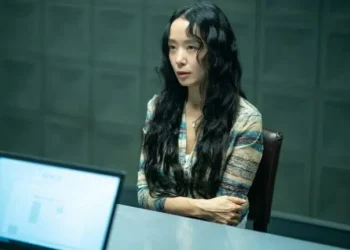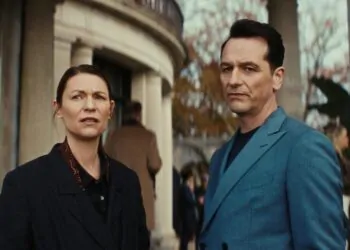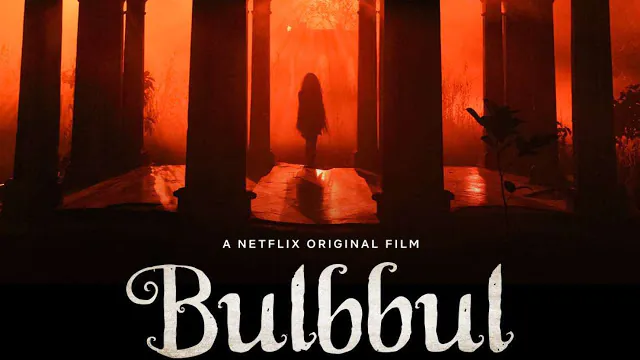Paul Thomas Anderson has never shied away from tackling America’s contradictions, and with his latest film, One Battle After Another, he delivers a towering work that is as provocative as it is exhilarating. This nearly three-hour odyssey cuts straight into the heart of the nation’s fractured identity—balancing moments of absurd humor with searing political critique. The result is a turbulent, unforgettable journey that explores revolution, family, and the lingering stains of white supremacy.
Story
Loosely inspired by themes in Thomas Pynchon’s Vineland, Anderson’s narrative is sprawling yet sharply precise. At its center stands Perfidia (Teyana Taylor), the fiery leader of a guerilla faction called the French 75. Alongside demolitions specialist Bob (Leonardo DiCaprio), she orchestrates bombings and raids aimed at dismantling America’s oppressive institutions. Their romance, however, complicates matters—especially when Perfidia refuses to be confined by motherhood, often clashing with Bob over their child, Willa.
Time skips forward sixteen years, bringing Colonel Steven Lockjaw (Sean Penn) into the spotlight, a figure whose fascist ambitions intertwine with his turbulent history with Perfidia. As old conflicts resurface, Willa (Chase Infiniti) emerges as a new force, her ferocity echoing her mother’s. What unfolds is a saga of betrayal, resilience, and the heavy toll of revolution.
Performances
The cast breathes electricity into Anderson’s vision. Teyana Taylor bursts onto the screen, commanding every frame as Perfidia. Leonardo DiCaprio embodies Bob with a mix of tragic hilarity and weary desperation, his erratic paranoia masking a tender devotion to fatherhood. Chase Infiniti, portraying Willa, is nothing short of dynamic—every look radiates conviction. Sean Penn delivers one of his most complex performances in years, peeling back layers of fragility beneath Lockjaw’s authoritarian facade. And in a standout supporting role, Benicio del Toro injects charm and sly humor as Sergio, Willa’s karate mentor.
Behind the Scenes
Visually and technically, One Battle After Another is breathtaking. Anderson’s direction harmonizes seamlessly with Michael Bauman’s evocative cinematography, particularly in a heart-stopping desert car chase that rivals cinema’s greatest. Andy Jurgensen’s editing brings kinetic energy, ensuring the film never drags despite its expansive runtime. Adding to the visceral experience is Jonny Greenwood’s score, which pulses with tension and unpredictability, heightening both the comedic and sinister turns.
What makes Anderson’s filmmaking so remarkable is the balancing act—he blends political commentary with human vulnerability, making the ideological conflicts feel deeply personal. The satire is biting, the action is relentless, and yet the emotional undertow remains powerful throughout.
Final Verdict
One Battle After Another is not just another political drama—it’s Anderson at his boldest. By confronting America’s systemic injustices while weaving an intimate tale of family and loss, the film achieves a rare duality: it is both a rallying cry and a meditation on disillusionment. Clocking in at nearly three hours, the film never overstays its welcome. Instead, it unravels into a vibrant, chaotic, yet profoundly moving experience.
If there’s one takeaway, it’s that Anderson’s vision doesn’t simply critique—it gestures toward renewal, passing the revolutionary torch to a new generation. One Battle After Another is a cinematic marvel: furious, funny, heartbreaking, and utterly unmissable.


